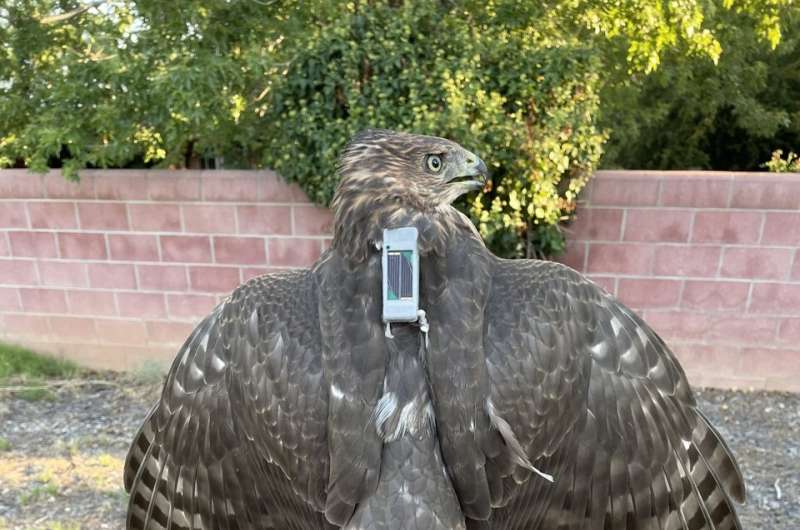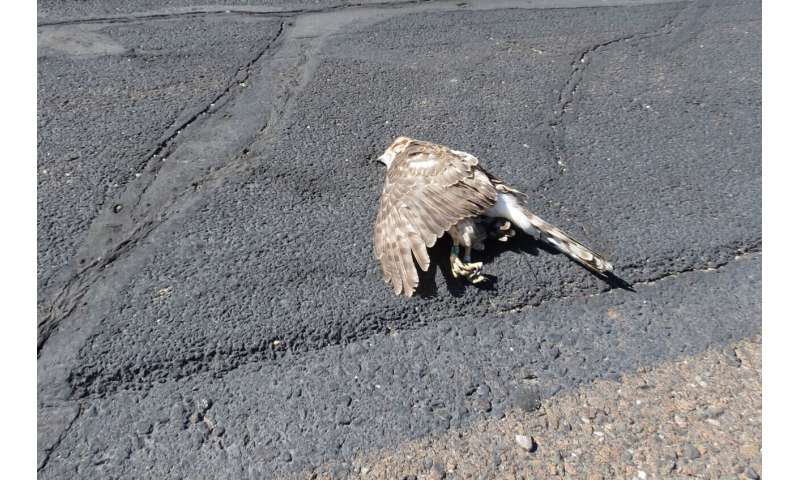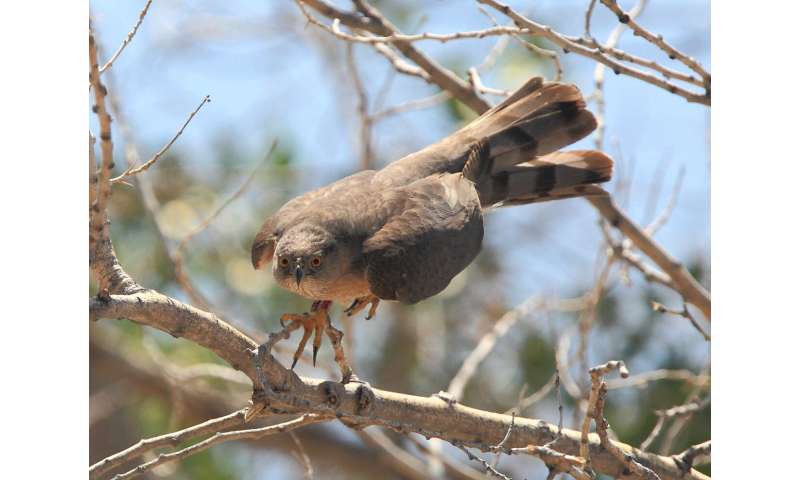This article has been reviewed according to Science X's editorial process and policies. Editors have highlighted the following attributes while ensuring the content's credibility:
fact-checked
proofread
Despite protection urban hawks still face an array of threats

Life can be hard for a raptor. If you're a teenager from the city, it's even harder. That's according to a new study published in the Journal of Raptor.
The research titled "Causes of Death of Female Cooper's Hawks (Accipiter cooperii) from an Urban Setting in New Mexico, U.S.," was conducted by Brian A. Millsap and his colleagues at the US Fish and Wildlife Service. Over the course of 11 years, his research team affixed GPS transmitters to 158 female Cooper's hawks in the Albuquerque area.
Of those, 88 died and were found, allowing the researchers to investigate the cause of death. The results were sobering—collisions with windows and other human-made objects accounted for a high percentage of deaths. Even more disturbing was the discovery that humans purposefully killed 8 tagged birds, some of which were bludgeoned to death.
Although raptors are protected in the U.S with legislation such as the Migratory Bird Treaty Act, this is the third recent study verifying that human persecution is a recurring issue for these important top predators.
Most information on causes of death for raptors comes from opportunistic band recoveries, rehabilitation centers, and wildlife health labs. These sources, while helpful, are biased because they only provide details on the cause of death for raptors that are found and reported or delivered. An intentionally shot hawk is less likely to be brought to a center than a hawk that is accidentally hit by a car.
Transmitter-tagged birds, however, do provide an unbiased source of information because the cause of death does not impact the discovery of death.
Using transmitters, Millsap and his colleagues assessed causes of death for two age classes of Cooper's hawk: first-year birds and after-first-year birds. They also assessed whether hawks were more vulnerable during certain times of the year.
-

Tagged juvenile female Cooper's Hawk from our study that died from a vehicle collision on Interstate 25 in Belen, New Mexico during her initial dispersal from her natal site. This was a particularly risky time for juvenile Cooper's Hawks. Credit: Brian Millsap -

Adult female Cooper's Hawk on our Albuquerque study area launching off her perch to attack researchers conducting a brood count at her nest. Credit: Brian Millsap
Mortality rates were high for first-year hawks during their first four months of independence, likely because it takes time to hunt successfully, avoid anthropogenic threats, and stand up to same-species challengers. This was evidenced by the fact that during the study, survival rates for birds that made it through their first year went up by 55%.
During the pre-breeding season, disputes over territory or mates were the leading cause of death for both age classes. Of the anthropogenic causes of death, collisions ranked first—52 hawks died either from a collision with a fence, electrical distribution line, window, vehicle, electrocution, or entrapment in the ductwork of buildings.
The second most prevalent cause of death was direct killing by humans. "The amount of human persecution that we observed was surprising," says Millsap. "I, like many others, had been falsely thinking that the days of rampant hawk shooting the U.S were behind us, but we are learning that is not the case."
Of note, many recovered hawks showed high levels of rodenticides, illustrating the importance of education surrounding the use of these poisons in urban settings. Rodenticides don't only affect targeted rodents; they bioaccumulate, moving up the food chain and concentrating at high levels in the bodies of top predators like Cooper's hawks.
On a more optimistic note, Millsap says this study received ample support from locals. "Almost everyone we interact with, from homeowners, police, city employees, and birdwatchers, have been extremely interested in our work and anxious to learn more about the Cooper's hawks that make their home in Albuquerque. The nearly universal access and support we have received has been crucial to the success of our study."
Future work will include a similar tracking study for male Cooper's hawks to investigate potential differences in mortality factors between sexes.
Raptors are bioindicators, meaning they serve as proxies for habitat health. As top predators, they also play a key part in supporting healthy ecosystem functioning. Understanding factors that impact their survival is crucial to tracking population growth and proactively supporting raptor populations. The continuation of this study and the associated interest of the public will hopefully help ensure that healthy Cooper's hawks build nests in backyards across Albuquerque for years to come.
More information: Brian A. Millsap et al, Causes of Death of Female Cooper's Hawks from an Urban Setting in New Mexico, USA, Journal of Raptor Research (2024). DOI: 10.3356/JRR-23-00022
Provided by Raptor Research Foundation




















